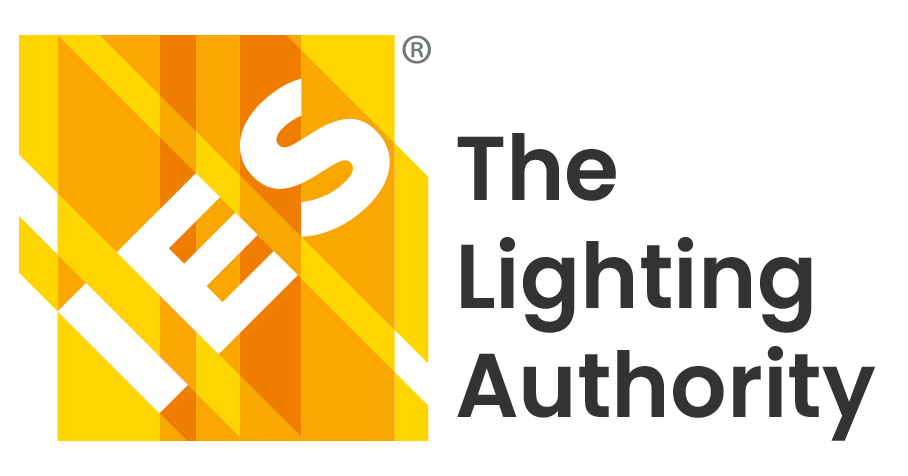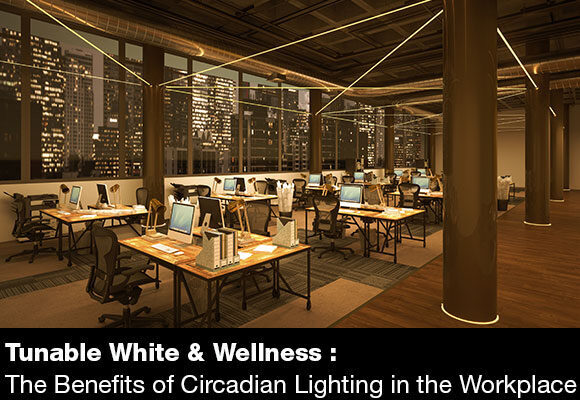The pandemic has completely revolutionized the way we think about offices, remote working and employees’ workplace needs. While many employees have enjoyed the benefits of working from home for the past two years, more are being asked to return to work.
With bringing employees back to the office, many strategies to improve air quality and general environmental health have been implemented. However, facility managers and building owners need to also consider the lighting because, regardless of the setting, lighting affects people’s productivity, health and well-being.
In partnership with Cornell University, Delos, and the Innovative Workplace Institute, the American Society of Interior Designers researched the impact of innovative workplace design on behavior and performance, how spatial design supports organizational goals, and the impact of design on human, organizational, and environmental sustainability. A study showed that 68 percent of employees were dissatisfied with the lighting situation in their offices, providing ample opportunity for improvement.

Tunable White Lights
Tunable white, or Kelvin changing, LED lighting allows for independent adjustment of both the color temperature and the brightness. Tunable white LED lighting combines the outputs of multiple LEDs; traditionally a warm white LED and a cool white LED, with a linear cross-fade between them being the basis for its tunable white color spectrum. Naturally occurring white light follows what is called the blackbody curve. The limitation of conventional 2-channel, linear tunable white leaves it unable to follow the blackbody curve except for the base points of the two color temperatures at either end of the given spectrum. Pure Edge Lighting has released a new product line under the Pure Smart brand called TruColor RGBTW that takes tunable white lighting to a new level of quality and consistency. With TruColor RGBTW there are 3 additional LED’s added to the two existing tunable white channels. These Red, Green, and Blue LED’s combined with warm white and cool white LED’s bend that linear dimming and allow it to follow the black body curve precisely across the entire spectrum. Its wide spectrum, 1500-6500K, produces a diverse pallet from warm amber glows, similar to candlelight and sunset, to clean bright white light representative of the mid-day sun. With the algorithms programmed into Pure Smart controls these color temperatures are reproduced flawlessly bringing the beauty of natural light into any space.

Researchers at the Interdepartmental Neuroscience program at Chicago’s Northwestern University say that workers with windows¹ in the workplace received 173 percent more white light exposure during work hours and slept an average of 46 minutes more per night compared to workers in offices without windows. This suggests that the definition of better-quality light means providing the kind of illumination that mimics the sun – something electric light used to be unable to do. Today, thanks to advancements in Tunable White LED lighting solutions like the TruColor product line from PureEdge, it can².
Benefits of Human-Centric Lighting
The Rensselaer Polytechnic Institute’s Lighting Research Center conducted a study of human-centric lighting in five government office buildings across the United States and found that employees working under human-centric tunable lighting experienced better sleep and lower levels of depression and stress than those who didn’t³. The Center conducted the study since little attention had previously been given to understanding the experience of light, especially how it affects occupants’ psychological and physiological systems, including circadian functions that regulate sleep, mood, and alertness.
Additional studies have proven that light’s spectral content and its intensity do indeed impact the human circadian rhythm. For example, while too much blue at night can undermine sleep, it can play a stimulating role during the daytime. Tunable white LED lighting enables people to return to the natural circadian rhythm by giving that range of lighting in the workplace.

Property company CBRE installed time-controlled, circadian-friendly lighting at its Amsterdam offices where high illuminance levels and cool, indirect white light were used in the morning and early afternoon hours; warmer, lower levels were used at midday and in the late afternoon hours. Approximately 120 employees were surveyed over a seven-month period via questionnaires, biological data and interviews, resulting in impressive findings:
- Productivity increased 18%
- Work accuracy improved 12%
- 76% of employees felt happier
- 71% of employees felt they had more energy
- 50% of employees felt healthier⁴
Lighting Effects
There is growing evidence of a link between natural light and employee happiness, which is triggering a larger number of requests for designers to maximize natural light and outside views.
Natural light, good ventilation, and comfortable temperatures can reduce absenteeism up to four days a year. With unscheduled absenteeism costing companies an estimated $3,600 annually per hourly worker and $2,650 each year for salaried workers, this can have a major impact on your bottom line. (https://hbr.org/2019/08/survey-what-employees-want-most-from-their-workspaces)
Not every facility can accommodate a new design that incorporates more windows nor are all building owners able to afford this renovation. A more practical solution is the addition of tunable lighting that can mimic natural light to exceed employee expectations and improve their overall well-being and productivity levels. Pure Edge Lighting recently partnered with WiZ Pro, a global brand of Signify, and adopted their WiZ Pro smart control ecosystem to bring their Pure Smart line of dynamic color-changing smart lamps, smart architectural fixtures, and smart wall controls to market making these benefits available to anyone. Simple user-friendly installation, easy-to-program schedules and rhythms, as well as scene creation and customization, harness the power of Tunable White and TruColor RGBTW making it accessible to anyone from homeowners looking to add a splash of color to a Lighting Designer creating one-of-a-kind commercial spaces. In addition to the circadian effective properties of TruColor RGBTW, it offers a wide variety of beautiful saturated and secondary colors to illuminate with.

Understanding the effects of tunable lighting is important, too. For example, cool-tuned lighting – that is, lighting with color-correlated temperatures (CCTs) between 4500K and 6500K – at a higher intensity mimics the bright blue sky on a sunny day and brings natural-quality light indoors.
This bluish-white light effectively suppresses melatonin secretion, which makes people feel tired when the sun goes down. It stimulates alertness and makes us think cognitively sharper. On the flip side, warmer light – like candlelight and dim incandescent lighting below 2700k – paired with a lower lighting intensity acts as the setting sun and signals to our bodies that it is time to start winding down⁵.
Tunable lighting helps employees adjust to the transition back to the office as well as increase their productivity, which is good for the bottom line. A win for everyone. But let’s explore any industry mandates regarding this technology that might affect a project.
Tunable White Lighting Standards
Currently, there are two specifications for circadian lighting, one promoted by UL/LRC and the other by the WELL Building Standard. Both institutions use metrics that try to quantify the impact of lighting on melatonin suppression based on lighting in the vertical illumination plane – in other words, the amount of light entering the eye. Both of these metrics use spectral distribution as their foundation to determine the overall impact, but there are technical differences between the two metrics. LRC’s model provides the design community with an intuitive tool for effective lighting design that is based on a metric they developed called Circadian Stimulus. The WELL Building Standard, on the other hand, is based on a metric called Equivalent Melanopic Lux and provides a certification to buildings by recognizing and rewarding those who invest in occupant well-being similar to what LEED certification does for those who invest in sustainability⁶.

Additional Applications
While this article focuses primarily on the use of tunable white lights in offices, there are many more applications where this lighting is beneficial. Tunable white lighting is being used in everything from nursing homes to treat dementia to psychiatric hospitals to curb aggressive behaviors. This method of adjusting for warm white lighting to cool white lighting to mimic outside conditions can evoke calm to alert behaviors in individuals that are serving as more gradual and holistic methods for treating mental disorders ⁷.
Classrooms are another application that may benefit from this lighting. In addition to the advantage of increased attentiveness, studies have shown that the sleep cycles of school-aged children (especially teenagers) may be better regulated by the use of lighting that mimics and reinforces natural daylighting cycles of intensity and coloration. More studies have found that color temperature can also have a profound effect on attention and focus. In classroom environments, it can be used to calm students before they begin a test or invigorate them to pay attention during a lecture⁸.
Another application that might benefit from tunable white lighting is the retail industry. Varying the light output and coloration during the day may help to stimulate sales by adding variety into the ambiance of the space. Restaurants and other hospitality spaces can also use tunable white lighting to change the ambiance based on the time of day. For example, a restaurant may dial in higher light levels and cooler colors of light for breakfast and lunch, but select lower levels of light and warmer coloration that may be more appropriate for dinner time⁹.
Adjustable CCT Tunable White lighting allows designers, building owners, and managers to provide a better, more positive experience for everyone. Using tunable white light is an effective strategy that can have profound effects on both physical and mental health of building occupants in myriad verticals.
¹ https://blog.amerlux.com/four-examples-how-tunable-lighting-improved-workspace-productivity/ (accessed May 18, 2022).
² Ibid
³ https://www.lrc.rpi.edu/programs/lightHealth/OfficeLighting.asp (accessed May 18, 2022).
⁴ https://www.cibsejournal.com/cpd/modules/2018-12-hum/ (accessed May 18, 2022).
⁵ https://facilitymanagement.com/workplace-productivity-lighting-controls/ (accessed August 10, 2022).
⁶ https://www.lightnowblog.com/2020/12/signifys-rahul-shira-talks-tunable-white-lighting/ (accessed October 21, 2022).
⁷ https://www.grealpha.com/news/the-health-benefits-of-the-tunable-white-led-light/ (accessed October 25, 2022).
⁸ Ibid
⁹ https://lightingcontrolsassociation.org/2017/03/22/applications-for-tunable-white-lighting/ (accessed October 25, 2022).

